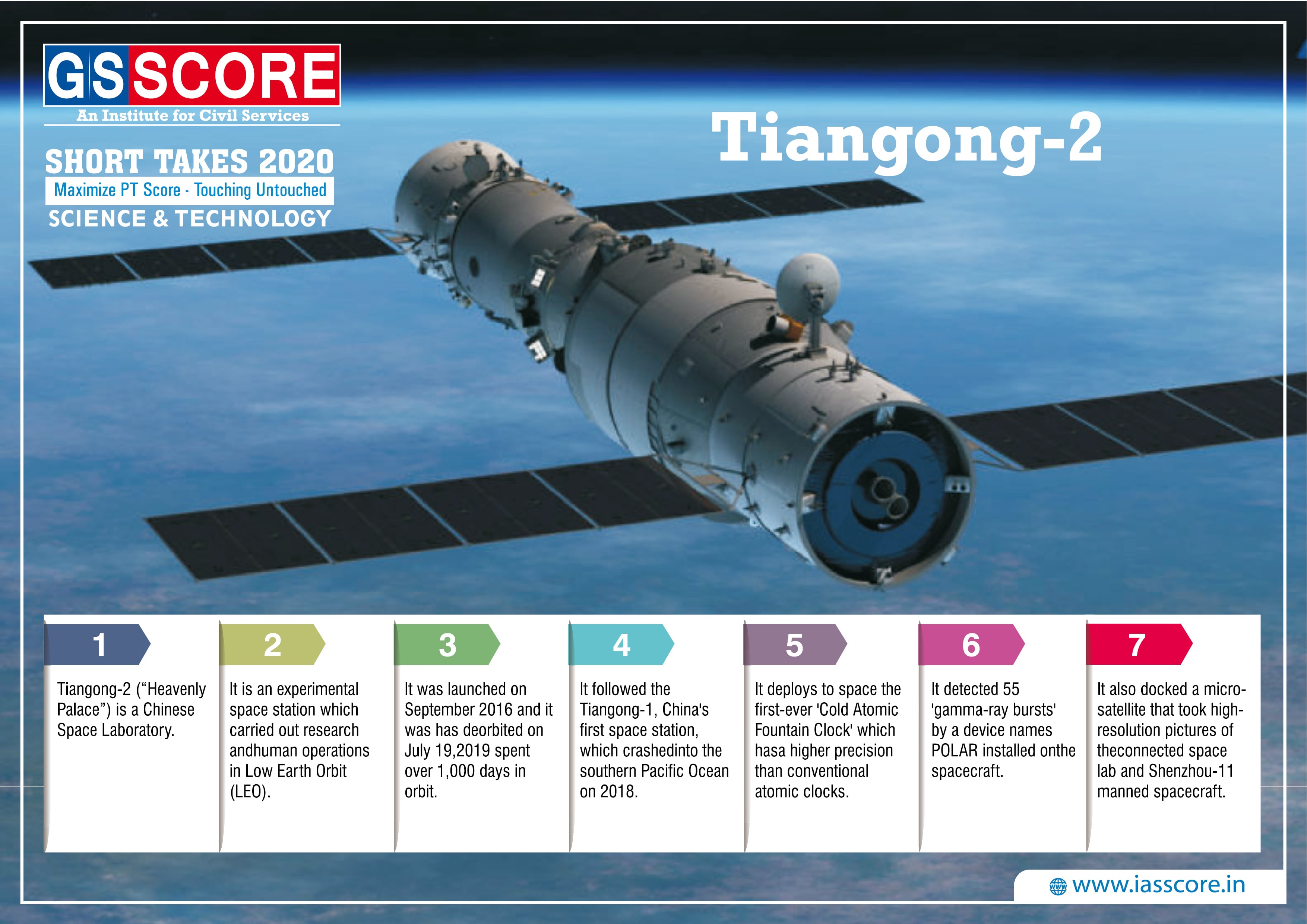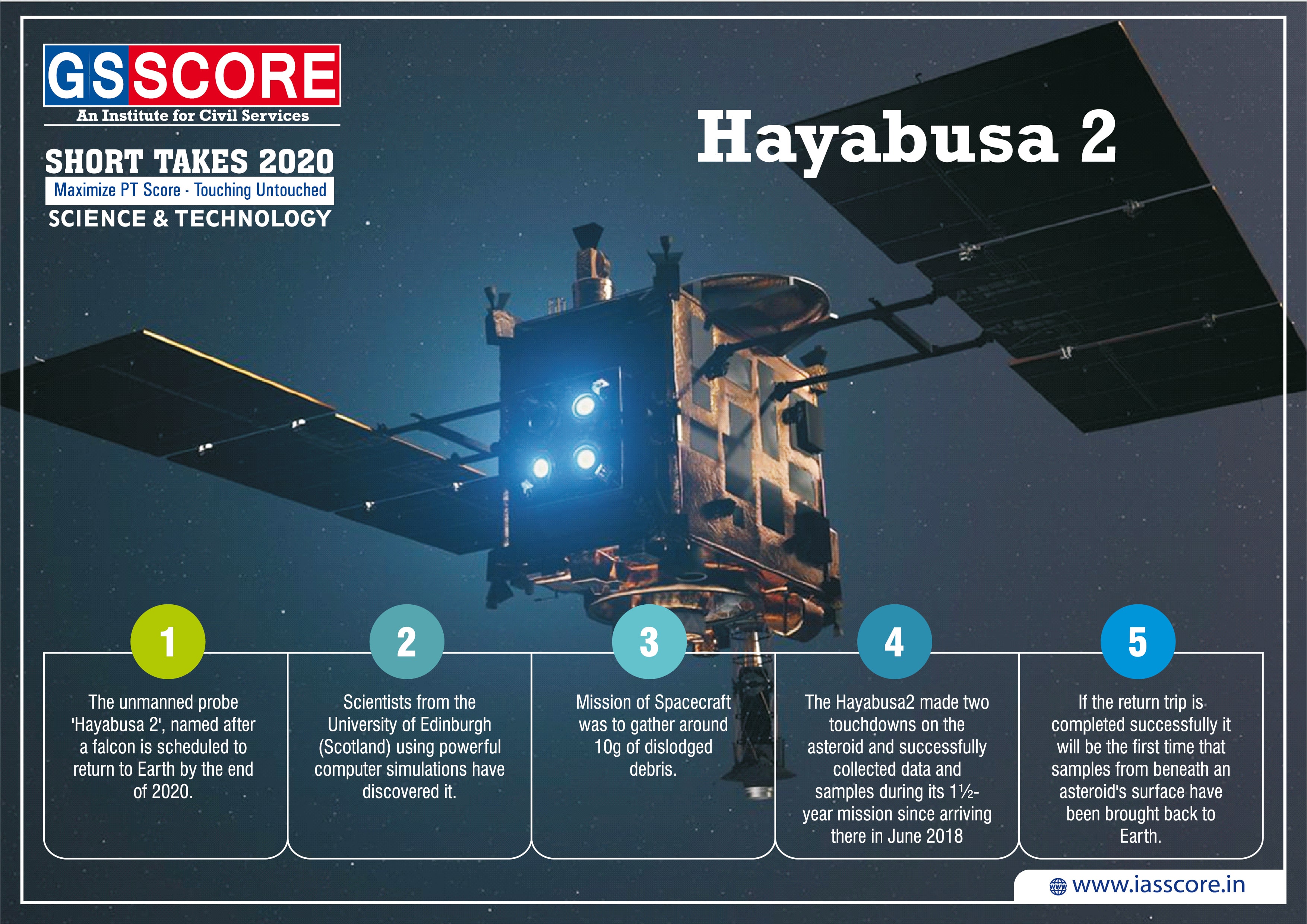Environment & Ecology: Environmental Convention
Cloud seeding technology
About
- Cloud seeding is a kind of a weather modification technology to create artificial rainfall. It was pioneered by atmospheric scientist Bernard Vonnegut.
- It works only when there are enough pre-existing clouds in the atmosphere.
- Rain happens when moisture in the air reaches levels at which it can no longer be held, and cloud seeding aims to facilitate and accelerate that process by making available chemical ‘nuclei’ around which condensation can take place.
- These ‘seeds’ of rain can be the iodides of silver or potassium, dry ice (solid carbon dioxide), or liquid propane. The seeds can be delivered by plane or simply by spraying from the ground.
- It is also known by other terms such as man-made precipitation enhancement, artificial weather modification, and rainmaking.
Where all has it been tried earlier?
- Cloud seeding is not new to India and it has earlier been attempted in Karnataka, Andhra Pradesh and Maharashtra to address drought.
- Similar experiments of cloud seeding had earlier been tried in Australia, America, Spain and France.
- In United Arab Emirates, the cloud seeding technique led to creation of 52 storms in Abu Dhabi.
- Also, such seeding is routine in Russia and other cold countries where the technique is used to disperse fog at the airports.
Cloud Seeding Methods
There are three cloud seeding methods: static, dynamic and hygroscopic
- Static cloud seeding involves spreading a chemical like silver iodide into clouds. The silver iodide provides a crystal around which moisture can condense. The moisture is already present in the clouds, but silver iodide essentially makes rain clouds more effective at dispensing their water.
- Dynamic cloud seeding aims to boost vertical air currents, which encourages more water to pass through the clouds, translating into more rain. Up to 100 times more ice crystals are used in dynamic cloud seeding than in the static method. The process is considered more complex than static clouding seeding because it depends on a sequence of events working properly.
- Hygroscopic cloud seeding disperses salts through flares or explosives in the lower portions of clouds. The salts grow in size as water joins with them.
Emperor Penguins would be extinct if climate goals are not met
Context
Warming climate may render Emperor Penguins, one of the most striking and charismatic animals on Earth, extinct by the end of the century, according to a new study by the Woods Hole Oceanographic Institution (WHOI).
About
- The study was a part of an international collaboration between scientists.
- Penguins are this indicator species, this canary in the coal mine, they are warning us of the future effect of climate.
- The big message is we need to listen to the penguins, and implement policies to meet the Paris agreement’s objective.
- Disappearing sea ice impacts Emperor Penguins directly, as the animals use it as a home base for their nine-month breeding season and for feeding and moulting.
- Emperor Penguins tend to build their colonies on ice with extremely specific conditions — it must be locked in to the shoreline of the Antarctic continent, but close enough to open seawater to give the bird’s access to food for themselves and their young.
- As climate warms, however, that sea ice will gradually disappear, robbing the birds of their habitat, food sources and ability to raise their chicks.
Emperor Penguins
- The status of the emperor penguin, one of Antarctica’s most iconic species, in the Red List of International Union for Conservation of Nature (IUCN) is Near Threatened.
- The emperor penguin is the tallest and heaviest of all living penguin species and is endemic to Antarctica. Emperor Penguins are the largest penguins in the world.
- Feathers of the head and back are black and sharply delineated from the white belly, pale-yellow breast and bright-yellow ear patches.
- While hunting, the species can remain submerged around 20 minutes. They can dive deeper than any other bird.
- This is the only penguin species that breeds during the Antarctic winter.
- Emperor Penguins don’t build any sort of nests at all. Their feet and brood patches are the only “nest” their chicks get.
Geo-engineering
Context
With intensified debate on climate change, alternate methods like geo-engineering can be considered.
About
- Also known as “climate engineering”, geo-engineering is the intentional large-scale intervention in the Earth’s climate system to counter climate change.
- It includes techniques to remove carbon dioxide from the atmosphere, and technologies to rapidly cool the Earth by reflecting solar energy back to space.
Types of geo-engineering proposals
- Carbon dioxide removal techniques (CDR): techniques to remove carbon dioxide from the atmosphere.
- Ocean fertilisation using phytoplankton and iron:
- Phytoplankton in the ocean use photosynthesis to capture CO2.
- When they die, they sink deep into the ocean, taking all that CO2 with them.
- Phytoplankton needs iron to grow.
- Increasing the ocean’s iron content will cause the phytoplankton population to increase, thereby removing more CO2.
- Biochar production:
- Biochar is a type of charcoal made from animal wastes and plant residues (such as wood chips, leaves, and husks) which can sequester carbon by circumventing the normal decomposition process or acting as a fertilizer to enhance the sequestration rate of growing biomass.
- Artificial trees:
- Artificial trees essentially would be a series of sticky, resin-covered filters that would convert captured CO2 to a carbonate called soda ash.
- Periodically, the soda ash would be washed off the filters and collected for storage.
- Carbon filtering:
- Carbon burial: For example; burning large quantities of wood in power plants with carbon-capture technology, grazing cattle in a way designed to turn grasslands into giant carbon sinks, or converting C02 into stones.
- Direct Air Capture: This technology uses huge fans to suck air through a filter to which CO2 chemically bonds. When heated, the filter releases the CO2, which can then be sold for other uses, such as growing vegetables in greenhouses, making carbonated drinks or even fuel.
- Solar geo-engineering, or “solar radiation management” (SRM); technologies to rapidly cool the Earth by reflecting solar energy back to space.
- Stratospheric aerosol injection:
- The idea is to simulate the cooling effects of volcanic eruptions, and enhancing the reflectivity of marine clouds.
- When volcanoes erupt, they spread into the atmosphere tiny particles, commonly known as "aerosols."
- Light-coloured aerosol particles can reflect incoming energy from the sun in cloud-free air, and dark particles can absorb it.
- A small fleet of aircraft, for example, could conceivably inject sulphate-aerosols or other reflecting particles into the stratosphere and drive large-scale cooling.
- Marine cloud brightening:
- Another idea is to increase the Earth’s ‘albedo’, which is the measure of amount of solar radiation the planet reflects back than it absorbs.
- Because whiter surfaces reflect more light than darker ones, a whiter Earth will reflect more of the Sun’s energy back into space, helping to keep temperatures cooler.
- One way to do this is to make clouds brighter and whiter.
- This can be done by spraying sea water into clouds over the ocean. The salt water will cause them to grow bigger and brighter.
- Other proposals to increase the Earth’s albedo include painting houses white, planting crops that are pale and perhaps even laying out reflective sheets in deserts.
- Cirrus cloud thinning (CCT):
- CCT is almost the opposite of marine cloud brightening. High-altitude Cirrus clouds are thin and whispy, so they don't reflect much solar radiation back into space, and instead trap long-wave radiation on earth.
- CCT proposes thinning them further through cloud seeding, letting more long-wave radiation escape.
- The problem with CCT is that the cloud seeding can have the exact opposite effect, thickening the Cirrus formations.
- Space reflectors:
- Technologies like giant mirrors in space or umbrellas in orbit can be built to reflect sunlight away and keep the planet cooler.
- All these ideas have been proposed, but would be so expensive that no one really thinks we could afford them.
Environmental Convention
1. Agreement on the Conservation of African-Eurasian Migratory Waterbirds
- The Agreement on the Conservation of African-Eurasian Migratory Waterbirds (AEWA) is an intergovernmental treaty dedicated to the conservation of migratory waterbirds and their habitats across Africa, Europe, the Middle East, Central Asia, Greenland and the Canadian Archipelago.
- Developed under the framework of the Convention on Migratory Species (CMS) and administered by the United Nations Environment Programme (UNEP), AEWA brings together countries and the wider international conservation community in an effort to establish coordinated conservation and management of migratory waterbirds throughout their entire migratory range.
Species Covered by AEWA
- AEWA covers 255 species of birds ecologically dependent on wetlands for at least part of their annual cycle, including many species of divers, grebes, pelicans, cormorants, herons, storks, rails, ibises, spoonbills, flamingos, ducks, swans, geese, cranes, waders, gulls, terns, tropic birds, auks, frigate birds and even the South African penguin.
- All AEWA species cross international boundaries during their migrations and require good quality habitat for breeding as well as a network of suitable sites to support their annual journeys. International cooperation across their entire migratory range, as provided by AEWA, is therefore essential for the conservation and management of migratory waterbird populations and the habitats on which they depend.
The AEWA Action Plan
- The AEWA Action Plan specifies different measures to be undertaken by Contracting Parties to warrant the conservation of migratory waterbirds within their national boundaries.
- These include species and habitat protection and the management of human activities as well as legal and emergency measures.
- Research and monitoring, education, awareness-raising and capacity building are also essential tasks for the implementation of the Agreement.
- In addition, special protective measures are to be implemented for those waterbird populations of particular conservation concern, listed in Column A of the Action Plan.
2. The Bamako Convention
- The Bamako Convention is a treaty of African nations prohibiting the import into Africa of any hazardous (including radioactive) waste. The convention came into force in 1998.
Origin
- The Bamako convention is a response to Article 11 of the Basel convention which encourages parties to enter into bilateral, multilateral and regional agreements on Hazardous Waste to help achieve the objectives of the convention.
Specificity
The Bamako convention uses a format and language similar to that of the Basel convention, except that:
- it is much stronger in prohibiting all imports of hazardous waste, and
- It does not make exceptions on certain hazardous wastes (like those for radioactive materials) made by the Basel convention.
What does the Convention cover?
- The Convention covers more wastes than covered by the Basel Convention as it not only includes radioactive wastes but also considers any waste with a listed hazardous characteristic or a listed constituent as a hazardous waste; the Convention also covers national definitions of hazardous waste.
- Other products also covered under the Convention as waste include that have been severely restricted or have been subject of prohibitions.
Purpose of the Convention
- To prohibit the import of all hazardous and radioactive wastes into the African continent for any reason;
- To minimize and control Trans boundary movements of hazardous wastes within the African continent.
- To prohibit all ocean and inland water dumping or incineration of hazardous wastes.
- To ensure that disposal of wastes is conducted in an “environmentally sound manner".
- To promote cleaner production over the pursuit of a permissible emissions approach based on assimilative capacity assumptions
- To establish the precautionary principle.
3. Basel Convention
- The Basel Convention on the Control of Trans boundary Movements of Hazardous Wastes and their Disposal was adopted on 22 March 1989 by the Conference of Plenipotentiaries in Basel, Switzerland, in response to a public outcry following the discovery, in the 1980s, in Africa and other parts of the developing world of deposits of toxic wastes imported from abroad.
- Awakening environmental awareness and corresponding tightening of environmental regulations in the industrialized world in the 1970s and 1980s had led to increasing public resistance to the disposal of hazardous wastes – in accordance with what became known as the NIMBY (Not in My Back Yard) syndrome – and to an escalation of disposal costs.
- This in turn led some operators to seek cheap disposal options for hazardous wastes in Eastern Europe and the developing world, where environmental awareness was much less developed and regulations and enforcement mechanisms were lacking.
- It was against this background that the Basel Convention was negotiated in the late 1980s, and its thrust at the time of its adoption was to combat the “toxic trade”, as it was termed. The Convention entered into force in 1992.
Objective
- The overarching objective of the Basel Convention is to protect human health and the environment against the adverse effects of hazardous wastes.
- Its scope of application covers a wide range of wastes defined as “hazardous wastes” based on their origin and/or composition and their characteristics, as well as two types of wastes defined as “other wastes” - household waste and incinerator ash.
Aims and provisions
The provisions of the Convention center around the following principal aims:
- The reduction of hazardous waste generation and the promotion of environmentally sound management of hazardous wastes, wherever the place of disposal;
- The restriction of Trans boundary movements of hazardous wastes except where it is perceived to be in accordance with the principles of environmentally sound management; and
- A regulatory system applying to cases where Trans boundary movements are permissible.
4. The Carpathian Convention
- The Carpathians are one of Europe's largest mountain ranges, a unique natural treasure of great beauty and ecological value, and home of the headwaters of major rivers.
- They also constitute a major ecological, economic, cultural, recreational and living environment in the heart of Europe, shared by numerous peoples and countries.
- The Carpathian Convention is a sub regional treaty to foster the sustainable development and the protection of the Carpathian region.
- It has been signed in May 2003 by seven Carpathian States (Czech Republic, Hungary, Poland, Romania, Serbia, Slovak Republic, Ukraine).
About
- The Framework Convention on the Protection and Sustainable Development of the Carpathians (Carpathian Convention) was adopted and signed by the seven Parties (Czech Republic, Hungary, Poland, Romania, Serbia, Slovak Republic, Ukraine) in May 2003 in Kyiv, Ukraine, and entered into force in January 2006.
- It is the only multi-level governance mechanism covering the whole of the Carpathian area and besides the Alpine Convention the second sub-regional treaty-based regime for the protection and sustainable development of a mountain region worldwide.
Vision
- The common vision of the Parties to the Carpathian Convention is to pursue comprehensive policy and cooperation in order to guarantee protection and sustainable development of the Carpathians.
- The improvement of the quality of live, the strengthening of local economies and communities, and the conservation of natural values and cultural heritage should go hand in hand in the Carpathian area.
- The Convention provides a framework for cooperation and multi-sectoral policy coordination, a platform for joint strategies for sustainable development, and a forum for dialogue between all stakeholders involved – from the local community and various NGO’s up to the regional and national Governments, Institutions of the European Union and the United Nations.
5. Convention on Biological Diversity
- The Convention on Biological Diversity (CBD) was signed at the Earth Summit in Rio de Janeiro, Brazil, in 1992 and entered into force on 29 December 1993.
- It is the first global agreement to cover all aspects of biological diversity: the conservation of biological diversity, the sustainable use of its components and the fair and equitable sharing of benefits arising from the use of genetic resources.
Role
- The Secretariat of the Convention on Biological Diversity was established (Article 24) to support the goals of the Convention. Its principal functions are to prepare for, and service, meetings of the Conferences of the Parties (COP) and other subsidiary bodies of the Convention, and to coordinate with relevant international bodies.
- As a neutral organization staffed by international civil servants, the Secretariat is accountable to the COP and its subsidiary bodies and carries out those tasks that fall under its associated mandate.
- The Secretariat is institutionally linked to UN Environment, its host institution and, pursuant to decision II/19, is located in Montreal, Canada since 1996.
- The Secretariat plays a significant role in supporting the implementation of the Convention.
- This can be fulfilled, for example by compilation of national reports on compliance by domestic authorities.
- The Secretariat transmits such reports and information to the COP and sometimes elaborates a synthesis of the national reports and information on implementation.
- The Secretariat also acts as information clearing house.
6. Convention on International Trade in Endangered Species of Wild Fauna and Flora
- CITES (the Convention on International Trade in Endangered Species of Wild Fauna and Flora) is an international agreement between governments.
- Its aim is to ensure that international trade in specimens of wild animals and plants does not threaten their survival.
- Widespread information nowadays about the endangered status of many prominent species, such as the tiger and elephants, might make the need for such a convention seem obvious.
- But at the time when the ideas for CITES were first formed, in the 1960s, international discussion of the regulation of wildlife trade for conservation purposes was something relatively new.
- With hindsight, the need for CITES is clear. Annually, international wildlife trade is estimated to be worth billions of dollars and to include hundreds of millions of plant and animal specimens.
- The trade is diverse, ranging from live animals and plants to a vast array of wildlife products derived from them, including food products, exotic leather goods, wooden musical instruments, timber, tourist curios and medicines.
- Levels of exploitation of some animal and plant species are high and the trade in them, together with other factors, such as habitat loss, is capable of heavily depleting their populations and even bringing some species close to extinction.
- Many wildlife species in trade are not endangered, but the existence of an agreement to ensure the sustainability of the trade is important in order to safeguard these resources for the future.
- Because the trade in wild animals and plants crosses borders between countries, the effort to regulate it requires international cooperation to safeguard certain species from over-exploitation.
- CITES was conceived in the spirit of such cooperation.
- Today, it accords varying degrees of protection to more than 37,000 species of animals and plants, whether they are traded as live specimens, fur coats or dried herbs.
How CITES works
- CITES works by subjecting international trade in specimens of selected species to certain controls. All import, export, re-exports and introduction from the sea of species covered by the Convention has to be authorized through a licensing system.
- Each Party to the Convention must designate one or more Management Authorities in charge of administering that licensing system and one or more Scientific Authorities to advise them on the effects of trade on the status of the species.
- The species covered by CITES are listed in three Appendices, according to the degree of protection they need.
7. Convention on the Conservation of Migratory Species of Wild Animals
- As an environmental treaty of the United Nations, CMS provides a global platform for the conservation and sustainable use of migratory animals and their habitats. CMS brings together the States through which migratory animals pass, the Range States, and lays the legal foundation for internationally coordinated conservation measures throughout a migratory range.
- As the only global convention specializing in the conservation of migratory species, their habitats and migration routes, CMS complements and co-operates with a number of other international organizations, NGOs and partners in the media as well as in the corporate sector.
- Migratory species threatened with extinction are listed on Appendix I of the Convention. CMS Parties strive towards strictly protecting these animals, conserving or restoring the places where they live, mitigating obstacles to migration and controlling other factors that might endanger them. Besides establishing obligations for each State joining the Convention, CMS promotes concerted action among the Range States of many of these species.
- Migratory species that need or would significantly benefit from international co-operation are listed in Appendix II of the Convention. For this reason, the Convention encourages the Range States to conclude global or regional agreements.
- In this respect, CMS acts as a framework Convention. The agreements may range from legally binding treaties (called Agreements) to less formal instruments, such as Memoranda of Understanding, and can be adapted to the requirements of particular regions. The development of models tailored according to the conservation needs throughout the migratory range is a unique capacity to CMS.
Organizational Structure of the Convention
- The Conference of the Parties (COP) is the decision-making body of the Convention. It meets at three-yearly intervals.
- Its Standing Committee (StC) gives policy and administrative guidance between meetings.
- The Scientific Council (ScC) meets between COP sessions to offer scientific advice and identify research and conservation priorities.
- The Secretariat develops and promotes Agreements, services meetings, supports and supervises research and conservation projects and co-operates with governments and partner organizations. The Secretariat is provided by the United Nations Environment Programme (UNEP) and is based in Bonn, Germany and has an out-posted office in Abu Dhabi, United Arab Emirates.
8. Minamata Convention on Mercury
- The Minamata Convention on Mercury is a global treaty to protect human health and the environment from the adverse effects of mercury.
- The Convention draws attention to a global and ubiquitous metal that, while naturally occurring, has broad uses in everyday objects and is released to the atmosphere, soil and water from a variety of sources. Controlling the anthropogenic releases of mercury throughout its lifecycle has been a key factor in shaping the obligations under the Convention.
- Major highlights of the Minamata Convention include a ban on new mercury mines, the phase-out of existing ones, the phase out and phase down of mercury use in a number of products and processes, control measures on emissions to air and on releases to land and water, and the regulation of the informal sector of artisanal and small-scale gold mining.
- The Convention also addresses interim storage of mercury and its disposal once it becomes waste, sites contaminated by mercury as well as health issues.
- The Minamata Convention is named after the Japanese city of Minamata, which experienced a severe, decades-long incidence of mercury poisoning after industrial wastewater from a chemical factory was discharged into Minamata Bay.
- The wastewater contained methylmercury, which bioaccumulated in fish and shellfish in the bay. Local people who consumed seafood from Minamata Bay became very sick, and many died or were left severely disabled.
What does the Minamata Convention require?
The Minamata Convention requires that party nations:
- Reduce and where feasible eliminate the use and release of mercury from artisanal and small-scale gold mining (ASGM).
- Control mercury air emissions from coal-fired power plants, coal-fired industrial boilers, certain non-ferrous metals production operations, waste incineration and cement production.
- Phase-out or take measures to reduce mercury use in certain products such as batteries, switches, lights, cosmetics, pesticides and measuring devices, and create initiatives to reduce the use of mercury in dental amalgam.
- Phase out or reduce the use of mercury in manufacturing processes such as chlor-alkali production, vinyl chloride monomer production, and acetaldehyde production.
- In addition, the Convention addresses the supply and trade of mercury; safer storage and disposal, and strategies to address contaminated sites.
- The Convention includes provisions for technical assistance, information exchange, public awareness, and research and monitoring. It also requires Parties to report on measures taken to implement certain provisions. The Convention will be periodically evaluated to assess its effectiveness at meeting its objective of protecting human health and the environment from mercury pollution.
9. Rotterdam Convention
- The Rotterdam Convention is an international treaty designed to facilitate informed decision-making by countries with regard to trade in hazardous chemicals.
- It establishes a list of covered chemicals and requires parties seeking to export a chemical on that list to first establish that the intended importing country has consented to the import.
- It also requires that a party seeking to export a chemical that is not listed under the Convention but that is subject to a ban or severe restriction in its own territory must provide notice to the importing country of the proposed export. The Convention entered into force on February 24, 2004.
How Does the Prior Informed Consent Procedure Work?
- The Rotterdam Convention establishes a prior informed consent (“PIC”) procedure to ensure that restricted hazardous chemicals are not exported to countries that do not wish to receive them.
- The PIC procedure does not ban or restrict any chemicals, nor does it mean that any individual country must automatically prohibit their import.
- Parties implement the PIC procedure through extensive information exchange, priority attention to national decisions on imports, and obligations related to export controls.
What Chemicals Are Covered Under the Rotterdam Convention?
- The Rotterdam Convention applies to industrial chemicals and pesticides that meet the criteria for listing under the Convention, generally because they have been banned or severely restricted in party countries or are severely hazardous pesticide formulations.
- Chemicals are subject to the PIC procedure if they are included in Annex III of the Rotterdam Convention.
10. Stockholm Convention
- The Stockholm Convention is a global treaty to protect human health and the environment from persistent organic pollutants (POPs).
- POPs are chemicals that remain intact in the environment for long periods, become widely distributed geographically, accumulate in the fatty tissue of living organisms and are toxic to humans and wildlife.
- POPs circulate globally and can cause damage wherever they travel.
- In implementing the Convention, Governments will take measures to eliminate or reduce the release of POPs into the environment.
- Over 152 countries ratified the Convention and it entered into force, on 17 May 2004.The Stockholm Convention focuses on eliminating or reducing releases of POPs.
- It sets up a system for tackling additional chemicals identified as unacceptably hazardous.
- Ultimately, the Convention points the way to a future free of dangerous POPs and promises to reshape our economy's reliance on toxic chemicals.
The Stockholm Convention is perhaps best understood as having five essential aims:
- Eliminate dangerous POPs, starting with the 12 worst
- Support the transition to safer alternatives
- Target additional POPs for action
- Cleanup old stockpiles and equipment containing POPs
- Work together for a POPs-free future
11. Tehran Conventions
- The understanding of the necessity to protect and preserve the Caspian Sea’s natural resources for future generations and that this goal can only be achieved through international cooperation was at the heart of the intent to create the Framework Convention for the Protection of the Marine Environment of the Caspian Sea, the Tehran Convention.
- By ratifying the Convention the five Parties Azerbaijan, Iran, Kazakhstan, Russia and Turkmenistan confirmed their readiness to go the path of sustainable development and to take environmental concerns into account in their development planning.
- Having entered into force in 2006, the Tehran Convention is the first regional legally binding instrument signed by all five Caspian littoral states.
- It serves as an overarching governance framework which lays down the general requirements and the institutional mechanism for environmental protection and sustainable development in the Caspian Sea region.
- Under its umbrella the Parties have developed additional Protocols on priority areas of common concern.
- The effective implementation of the Tehran Convention and its Protocols will support the protection of the marine environment and with it of the livelihoods, health and well-being of present and future generations around the Caspian Sea.
Tiangong-2

Space Technology cell

Secretagogin

ETVAX

Hayabusa 2



